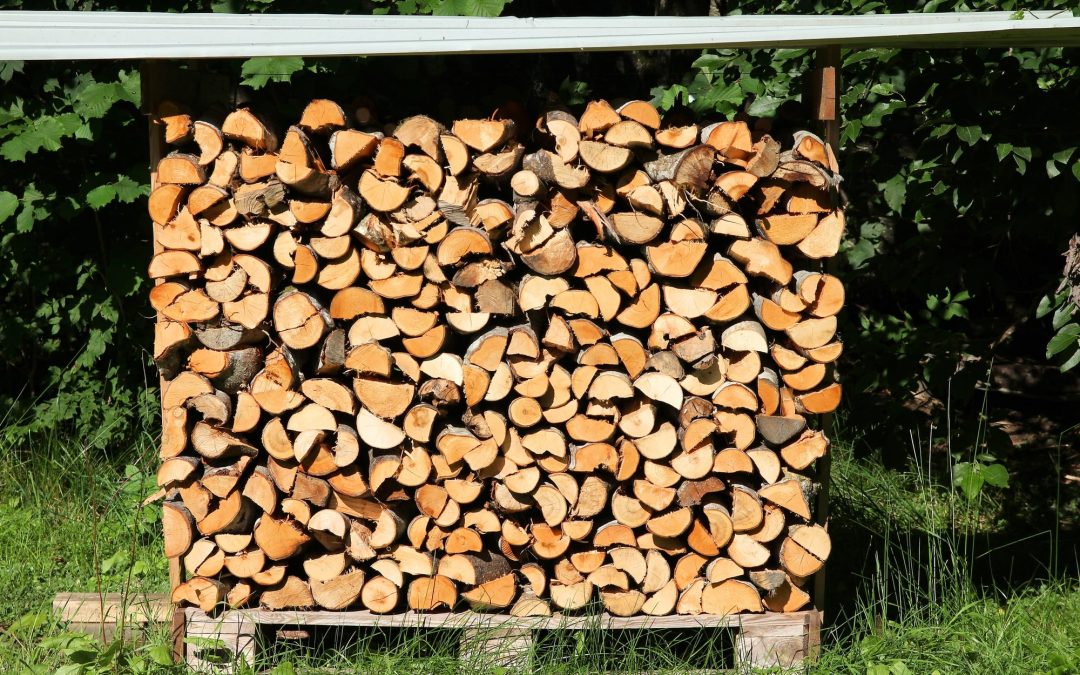When you buy seasoned firewood from Saunders Landscape Supply, you’re getting wood that’s been dried for at least six months, ensuring that the core is dry and ready to burn. However, customers often ask, “Why does my seasoned firewood feel wet? Why does my moisture meter say it’s wet?” Let’s clear up the difference between seasoned wood and wet wood, and why surface moisture doesn’t mean the wood isn’t seasoned.
Seasoned and Wet Are Not Mutually Exclusive
Seasoned firewood has been exposed to the elements for months so that the sap and moisture deep inside the log dry out. This process is called “seasoning,” and it ensures the wood is ready to burn efficiently. However, because firewood must sit outside during the seasoning process, surface moisture may accumulate, especially after rain or during humid weather.
This distinction between seasoning and wetness often confuses buyers, especially if they’re using moisture meters to test the wood. Moisture meters can only measure the surface moisture, which means they’ll show a “wet” reading if they’re only touching the damp outer layer. The core, however, is dry, which is the main goal of seasoning.
Why Your Firewood Feels Wet – It’s Only on the Surface
When you order seasoned firewood from Saunders Landscape Supply, it’s fully seasoned and ready to burn. However, if you’re receiving it after a wet week, the surface of the wood will still feel damp. Think of it this way: Even though the interior of the log is dry, a week of rain will inevitably make the surface damp. This surface moisture doesn’t mean the wood isn’t seasoned; it just needs some time to air out before you use it.
The best way to think about it is that seasoning involves drying out the core over time, while surface moisture is simply the result of current weather conditions.
Tips for Drying Out Surface Moisture on Seasoned Wood
If you receive firewood that feels damp on the surface, don’t worry—drying it out is simple. Here are some tips for dealing with surface moisture so you can enjoy a warm, efficient fire:
- Bring Wood Indoors: Move as much wood as possible indoors, such as into a garage or shed. The warmer, drier indoor air will help remove the surface moisture more quickly.
- Temperature Matters: The hotter the environment, the faster the wood will dry. In the winter, indoor areas can help dry out the surface within a few days. Outdoors, however, the drying time can vary significantly based on weather. In temperatures below freezing, the moisture on the surface may actually freeze, delaying the drying process until it warms up again.
- Avoid Stacking and Covering Wet Wood: While it might seem like a good idea to cover damp firewood, stacking and covering it can trap moisture in, prolonging drying time. Leave the wood uncovered and allow air circulation to help the moisture evaporate.
The Best Time to Buy Firewood
If you’re concerned about moisture, try to purchase firewood in August or early September. Buying early gives the wood time to air out in your storage area before the coldest months. Even if it rains, early purchasing means your firewood has ample time to dry out at home.
When you buy seasoned firewood from Saunders Landscape Supply, you’re getting wood that’s been properly dried for six months or more. Remember, surface moisture is only temporary and doesn’t impact the burn quality once it’s allowed to dry out. Embrace the warmth of your fire, knowing that a little patience with surface moisture is all it takes to enjoy seasoned firewood at its best.
Read More

